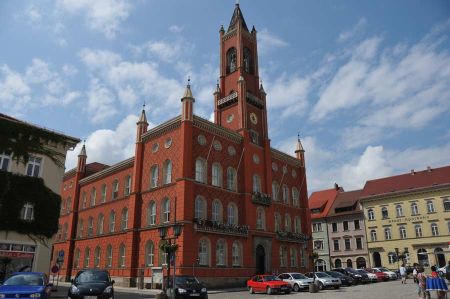Lessing town of Kamenz on the edge of Sorbian region
- Written by Portal Editor
Following an invitation from Claudia and Heinrich, we drove to the previously completely unknown town of Kamenz, where a first surprise awaited us at the entrance to the town.
In addition to the place name Kamenz, the Upper Sorbian word Kamjenc was noted on the sign at the entrance to the town, which roughly translates to "small place on the stone". For us, this was the first sign of an exceptionally shaped region that we now had to get to know.
Via Regia over the Black Elster
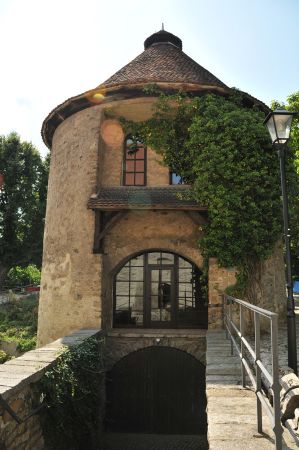 Today, Kamenz is a large district town in the district of Bautzen in Saxony, about 40 kilometres north-east of Dresden. At the end of the 12th century, where the old town centre is today, there was a castle that was built to secure the Via Regia crossing the Black Elster. You are wrong if you think that the Via Regia is one of the Roman roads that we use as part of our project. If you think of a trade route that was comparable to the Roman road system of about the same age, you are correct, because the Via Regia, as an important supra-regional trade route, stretched from Belgium and Spain to Russia. Even today, parts of the Via Regia are also integrated into the Way of St. James, so that intercultural exchange still takes place along this route and is therefore of great importance for international understanding, integration and tolerance, and of course for us too. Only a little later we were to learn that the Romans certainly left their mark here, too, far from the Roman road system. But more on that later.
Today, Kamenz is a large district town in the district of Bautzen in Saxony, about 40 kilometres north-east of Dresden. At the end of the 12th century, where the old town centre is today, there was a castle that was built to secure the Via Regia crossing the Black Elster. You are wrong if you think that the Via Regia is one of the Roman roads that we use as part of our project. If you think of a trade route that was comparable to the Roman road system of about the same age, you are correct, because the Via Regia, as an important supra-regional trade route, stretched from Belgium and Spain to Russia. Even today, parts of the Via Regia are also integrated into the Way of St. James, so that intercultural exchange still takes place along this route and is therefore of great importance for international understanding, integration and tolerance, and of course for us too. Only a little later we were to learn that the Romans certainly left their mark here, too, far from the Roman road system. But more on that later.
Country town of Wittichenau and the monastery of St. Marienstern
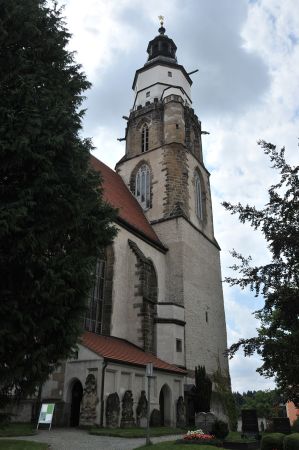 The city was first mentioned in a document in 1225, and since 1319 Kamenz has been a free city with only a few short interruptions. In 1346, the regional Upper Lusatian League of Six Towns was founded to strengthen its own trading positions, and Kamenz became its westernmost member town. From October 6, 1429, Kamenz was besieged by the Hussites for several days and then taken. The historical records show that most of the residents were able to escape beforehand and found shelter in Dresden. The dreaded Bohemian "God's warriors" also visited the surrounding area and devastated the open country town of Wittichenau and the St. Marienstern monastery. Then they moved against Bautzen.
The city was first mentioned in a document in 1225, and since 1319 Kamenz has been a free city with only a few short interruptions. In 1346, the regional Upper Lusatian League of Six Towns was founded to strengthen its own trading positions, and Kamenz became its westernmost member town. From October 6, 1429, Kamenz was besieged by the Hussites for several days and then taken. The historical records show that most of the residents were able to escape beforehand and found shelter in Dresden. The dreaded Bohemian "God's warriors" also visited the surrounding area and devastated the open country town of Wittichenau and the St. Marienstern monastery. Then they moved against Bautzen.
In Kamenz, as in many medieval towns, witch hunts were carried out between 1607 and 1655: in 1607 Peter Babus, executioner in Kamenz, was sentenced to death in a witch trial and in 1655 even the deacon Kaspar Dulichius was beheaded during the trials. In 1707 a great fire destroyed most of the houses in the old town. So much for some historical data and facts about the city.
Poet and writer Gotthold Ephraim Lessing
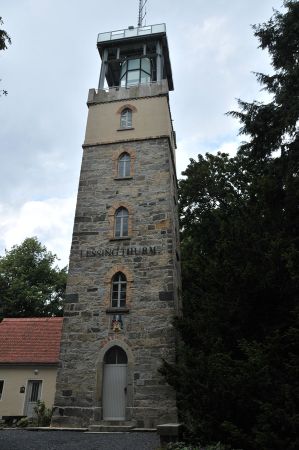 The poet and writer Gotthold Ephraim Lessing was born in Kamenz in 1729. The father of the most well-known son of the town of Kamenz, Johann Gottfried Lessing, was pastor at the main church of St. Marien at the time. The house where Lessing was born was destroyed in the last major fire in the city in 1842, but today a museum and a memorial at the former location of his parents' house commemorate the most famous son, Gotthold Ephraim Lessing.
The poet and writer Gotthold Ephraim Lessing was born in Kamenz in 1729. The father of the most well-known son of the town of Kamenz, Johann Gottfried Lessing, was pastor at the main church of St. Marien at the time. The house where Lessing was born was destroyed in the last major fire in the city in 1842, but today a museum and a memorial at the former location of his parents' house commemorate the most famous son, Gotthold Ephraim Lessing.
We set off by bike to explore the city of Kamenz. Only on the ascent in the city centre do we notice the considerable differences in altitude in the city region, so we decide to explore the city centre on foot. Our first destination was the monastery church, where we could safely park our bikes.
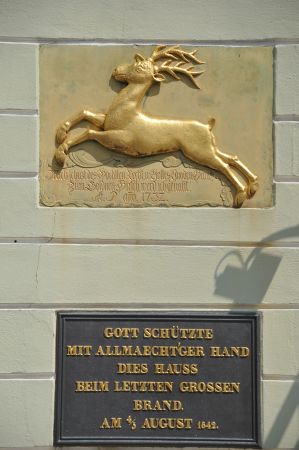 Here on the northern edge of the old town is the monastery church of St. Anne, which dates back to 1510 and should be understood more as a museum, as it boasts a total of five late Gothic carved altars and other sacred treasures. Our next destination is the St. Just Church on Königsbrückerstraße, which we unfortunately find completely closed. This is very unfortunate, because this church was one of the main goals of our first exploration. Without further ado, we continue the ascent and thus reach the Hutberg, which, in addition to the Lessingturm, also boasts the Hutbergbühne, an open-air stage for up to 10,000 spectators. Posters indicate some of the big names in showbiz who have performed here.
Here on the northern edge of the old town is the monastery church of St. Anne, which dates back to 1510 and should be understood more as a museum, as it boasts a total of five late Gothic carved altars and other sacred treasures. Our next destination is the St. Just Church on Königsbrückerstraße, which we unfortunately find completely closed. This is very unfortunate, because this church was one of the main goals of our first exploration. Without further ado, we continue the ascent and thus reach the Hutberg, which, in addition to the Lessingturm, also boasts the Hutbergbühne, an open-air stage for up to 10,000 spectators. Posters indicate some of the big names in showbiz who have performed here.
St. Marien is the only hall church built of granite
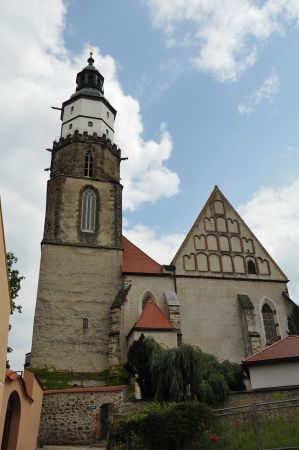 A little later, along Pulsnitzerstrasse, we reach the Red Tower, which is one of the few artefacts of the medieval town and monastery fortifications that has survived. Further remains can be found in the town clerk's bastion ("Pichschuppen"), in the monks' wall and in the monastery gate. Our path leads from the Red Tower to the main evangelical church of St. Marien, a late Gothic Hall church that was built between 1275 and 1479. St. Marien is the only granite hall church north of the Alps. Right next to it is the Catechism Church, a fortified church from 1358.
A little later, along Pulsnitzerstrasse, we reach the Red Tower, which is one of the few artefacts of the medieval town and monastery fortifications that has survived. Further remains can be found in the town clerk's bastion ("Pichschuppen"), in the monks' wall and in the monastery gate. Our path leads from the Red Tower to the main evangelical church of St. Marien, a late Gothic Hall church that was built between 1275 and 1479. St. Marien is the only granite hall church north of the Alps. Right next to it is the Catechism Church, a fortified church from 1358.
Directly opposite the church is the already mentioned Lessing memorial at the former location of Lessing's birthplace. The Lessinghaus is one of the 20 cultural memorial sites in the new federal states. We now come to the town hall, which was built in 1847-1848 by Carl August Schramm in the Italian Neo-Renaissance style. On the market square in front of the town hall is the Andreas fountain with a sandstone statue of Justitia.
Estimated proportion of Sorbs at an average of 12%
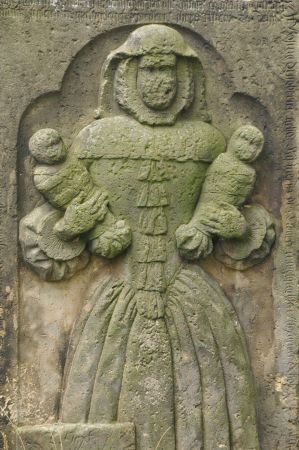 Already at the beginning of our article we pointed out the entrance sign in Sorbian and German. Large parts of the signage in the city centre are also bilingual. What are the "Sorbs", of which according to official figures there are only around 60,000 people. 45,000 to 50,000 Sorbs were determined based on self-attribution and around 67,000 on the basis of active language knowledge. Two thirds of them live in Saxon Upper Lusatia, mainly in the Catholic triangle between the towns of Bautzen, Kamenz and Hoyerswerda (in the five communities on Klosterwasser as well as in the community of Radibor and parts of the communities of Göda, Neschwitz, Puschwitz and in the town of Wittichenau).
Already at the beginning of our article we pointed out the entrance sign in Sorbian and German. Large parts of the signage in the city centre are also bilingual. What are the "Sorbs", of which according to official figures there are only around 60,000 people. 45,000 to 50,000 Sorbs were determined based on self-attribution and around 67,000 on the basis of active language knowledge. Two thirds of them live in Saxon Upper Lusatia, mainly in the Catholic triangle between the towns of Bautzen, Kamenz and Hoyerswerda (in the five communities on Klosterwasser as well as in the community of Radibor and parts of the communities of Göda, Neschwitz, Puschwitz and in the town of Wittichenau).
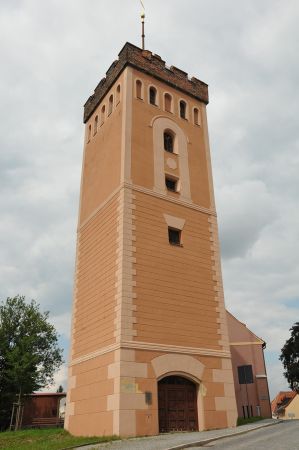 In the German-Sorbian parts of the districts in the Free State of Saxony, the Sorbs make up an estimated 12% on average and only about 0.9% of the total population of Saxony.
In the German-Sorbian parts of the districts in the Free State of Saxony, the Sorbs make up an estimated 12% on average and only about 0.9% of the total population of Saxony.
The Sorbs are an originally West Slavic people, usually German nationals who, in addition to their language and culture, still have their own officially recognized flag and anthem. Members of this ethnic group, who were also referred to as Wends or formerly as Lusatian Serbs, are considered a national minority, which is also recognized as such in Germany. Against the background of the major problems in the recognition of Kurds or Armenians within the Turkish population as an equal minority, this is such an interesting topic that we will deal with it again later in detail.
Previous results of antiquity research
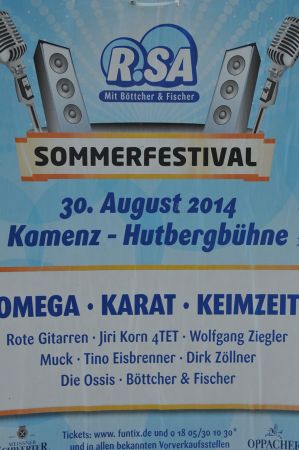 At the end of our tour of Kamenz we want to go to the West Lusatia Museum, which today forms a unit together with the Malzhaus. We are particularly interested in the exhibitions on the history of the city and on the results of antiquity research to date. Lo and behold, we quickly come back to you, the Romans.
At the end of our tour of Kamenz we want to go to the West Lusatia Museum, which today forms a unit together with the Malzhaus. We are particularly interested in the exhibitions on the history of the city and on the results of antiquity research to date. Lo and behold, we quickly come back to you, the Romans.
In 1996, Harald Hempel from Wiesa wanted to collect mushrooms during a foray through the Kamenzer Spittelforst - but he found 476 Roman copper coins and coin fragments from the 3rd and 4th centuries AD (the originals are in the coin cabinet in Dresden). Despite the large number, they had little monetary value - that is, Roman peanuts instead of Lusatian mushrooms. So the former owner probably didn't want to hide the small change; rather it was intended as a sacrifice.
Most of the money was minted in the Siscia (Sisak / Croatia), Sirmium (Sremska Mitrovica / Serbia) and Thessalonicia (Saloniki / Greece) mints and thus points to contacts with the Balkan island.
The second find while playing
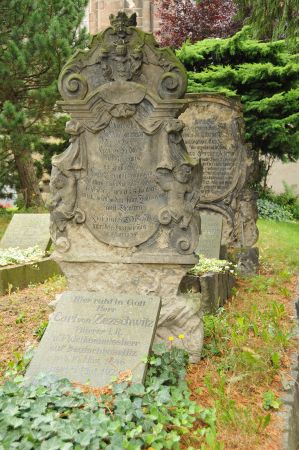 In 1985, while playing in a gravel pit near Schwepnitz, two schoolchildren made a sensational find. Only 20 centimetres below the surface they found very special gravel: 121 Roman silver denarii.
In 1985, while playing in a gravel pit near Schwepnitz, two schoolchildren made a sensational find. Only 20 centimetres below the surface they found very special gravel: 121 Roman silver denarii.
The coins were minted in Rome between 64 and 164 AD and some are still almost minted. A denarius even belongs to the 4-month reign of Emperor Othos (69 AD). This rare coin hardly made it into the Roman provinces - all the more astonishing is its appearance in West Lusatia, which was so barbaric at the time. The originals of these coins are also in the coin cabinet in Dresden.
Our first trip to Kamenz is coming to an end and we cycle back to the caravan to report as quickly and comprehensively as possible on what has happened.
Please read as well:
Klootshooting - North German leisure sport older than Boßeln!
Oud Zaandijk – attractive gables attract visitors
https://www.alaturka.info/en/germany/saxony/6246-the-lessing-town-of-kamenz-on-the-edge-of-the-sorbian-region#sigProIdc178f14d33
